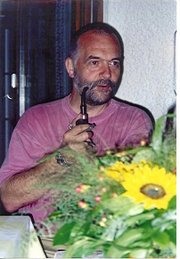From a typical tourist point of view, the city does not offer a lot, in terms of buildings or interesting streetscapes. However, the city as a whole is quite varied and has many “shades” of appearance, which make it interesting.


First of all, it is built on a number of hills – the Kampala tourist office claims that it is 7 hills and thus compares it directly with Rome.- I must admit, I find the comparison somewhat adventurous, but so be it.

What I find interesting when driving through the city is how much country life penetrates the city. In some parts, like Kabuusu, where the house is which I rent as my office and accommodation during my visits, you can drive a few minutes and you are in a real African village. And that might be some 20 minutes drive away from the city centre.
….Drive away…. Important issue. The traffic in Kampala can be challenging. As I wrote after my first visit.
The drive from Entebbe to Kampala gave me a first glimpse of a different world. Maybe a bit comparable to a cab drive from the Airport in Kathmandu to the city. The street from the airport to the city is one of the few very good ones, as it is also the main route to Nairobi (Kenya) I should soon learn that this was the exception, not the rule to encounter a tarmac road. Traffic was fairly dense and free wheeling to say the least.

A wealth of choice – as long as you know, which one to select at the bus terminal in Kampala city
In Kampala there is essentially only one traffic rule and that is “keep your nerves” everything else is more or less a matter of adhoc negotiation.
In Kampala they afford themselves the luxury of approximately 3 sets of traffic lights. For a city of some 1.2 Million inhabitants (the figure is a rough estimate, as nobody knows precisely how many there are in Kampala and the figure changes frequently by way of internal migration) 3 traffic lights is basically 3 too many. Unless you were to have about 3000, 3 are as useless as a hole in the head.
Traffic in Kampala usually moves at a fairly slow pace for two reasons, firstly congestion, secondly conditions of the roads. In the inner city of Kampala, around Kampala Road, Jinja Road etc. the traffic is very dense during daytime.
The majority of cars are little 12 seater buses which are communal taxis serving as public transport. The fact that they have 12 seats, does not mean that they would not accommodate around 15 people if need be.
Most of the drivers of these taxis have a kamikaze like attitude towards traffic rules. And since they tend to be in the majority, they usually rule, that is unless two or more of them cancel each other out in terms of who is first into the round about. That sometimes offers a ‘window of opportunity’ for other traffic contestants to try their luck with turning into a street or fitting into the flow around one of the ubiquitous round abouts.
It can sometimes be quite helpful to follow a driver who has proven to be particularly successful in negotiating his way into the traffic flow. However, such ‘luck’ of following a good leader is usually only short lived since they stop and go frequently to drop off or take on new passengers.
An equally numerous mode of transportation are motorbikes which tend to zip through the traffic, using every available inch of free space, or what seems to be free space for a fleeting moment. Those too can carry numbers of passengers which are well and truly in excess of the original design rules. And a large part of the motorcycle riders are the so called Bodaboda, which is the motorcycle taxi.
The second challenge in Kampala traffic are potholes. They come in all shapes and sizes from little unevenness in the street surface to baby-bathtub sized deep holes which, once entered abruptly can render your suspension perfectly useless. Over the years, I have learned the location of those potholes, at least the really big ones. But, as you might expect, they change. Some get filled, some start a new life. And it is during every visit my challenge, to learn the new ones.

One thing struck my eye when driving from the airport into the city and that were the large number of carpentry businesses along the main road which all displayed beds very prominently in front of their ‘shops’. That prompted me to give Uganda the moniker ‘the sleeping country’



A wonderful invention is shown in these pics. This is one of the ubiquitous round abouts with a twist. It is at the bottom of the street which comes down from the King’s palace. Now, if the King wants to drive into the city, those little gates are opened, so that the king does not need to submit to the indignity of driving around the round about but drives straight through it.


No comments:
Post a Comment